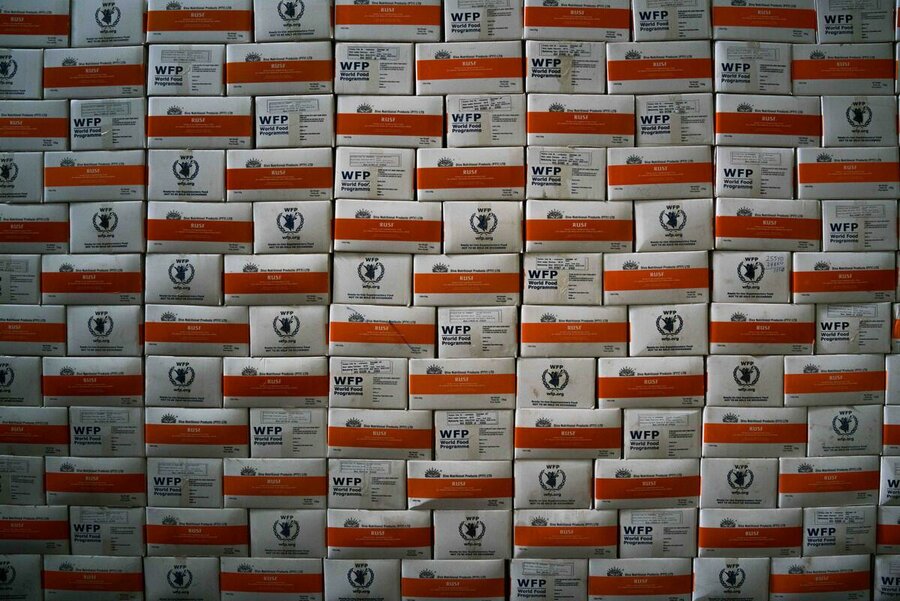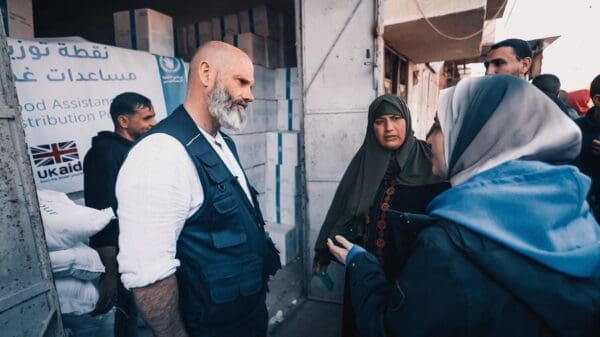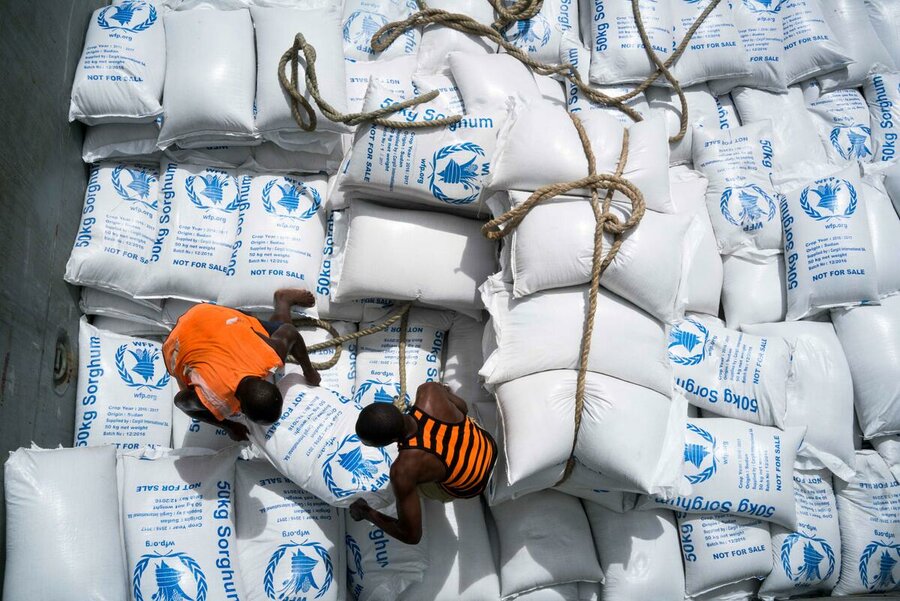
What’s in a Box: How Cutting-Edge Packaging Can Help Safeguard the Environment and Fight Hunger
For World Food Safety Day, see how the United Nations World Food Programme (WFP) and Mondi are working together to develop packaging that delivers — for people and the planet.
“We have 120 trucks leaving Mombasa this afternoon,” Clara Silva says. Silva is the head of the U.N. World Food Programme’s office in the Kenyan port city of Mombasa. “They’re transporting over 7 million pounds of sorghum and we have more to go.”
Food, and other assistance from around the world, arrives here in Mombasa. The U.N. World Food Programme then directs it to where it is needed most in the region and beyond. The port and nearby warehouse are where Silva and her 40-strong team spend most of their time, working on anything from liaising with U.N. World Food Programme country offices to ensuring food safety and quality standards are met.
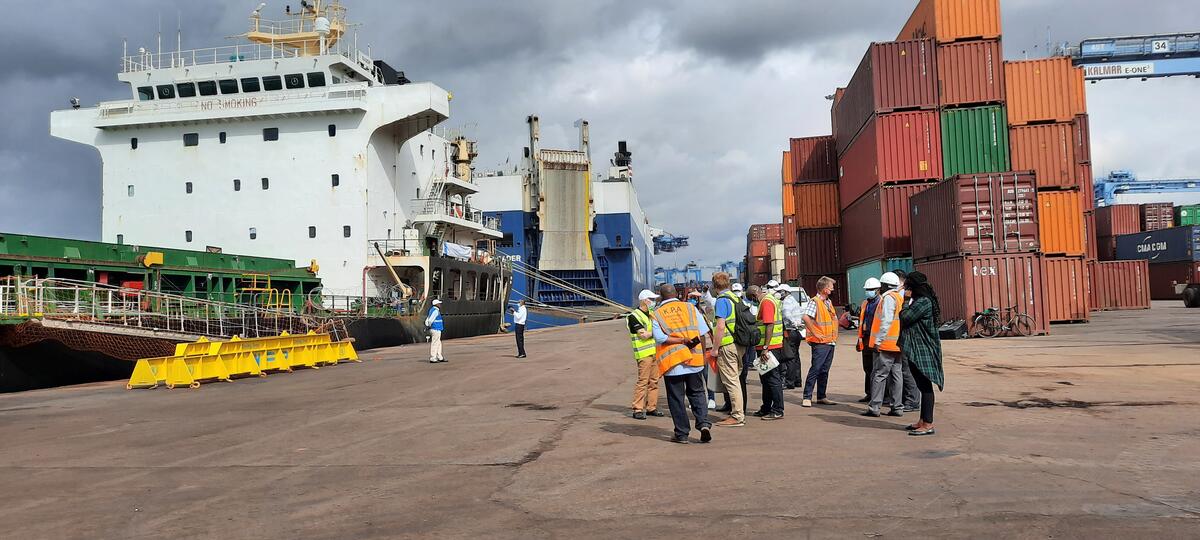
The WFP office in Mombasa has over 40 staff members running the port operations.
In October alone, Silva’s team tracked 300 million pounds of food supplies. “We move over 600 million pounds of cargo a year,” she says.
What this translates to is a staggering number of boxes and bags: “Over 1 million bags and 1.3 million cartons every year.”
All that packaging contains critical food assistance for people facing hunger. While it helps solve a humanitarian problem, it poses a sustainability one.
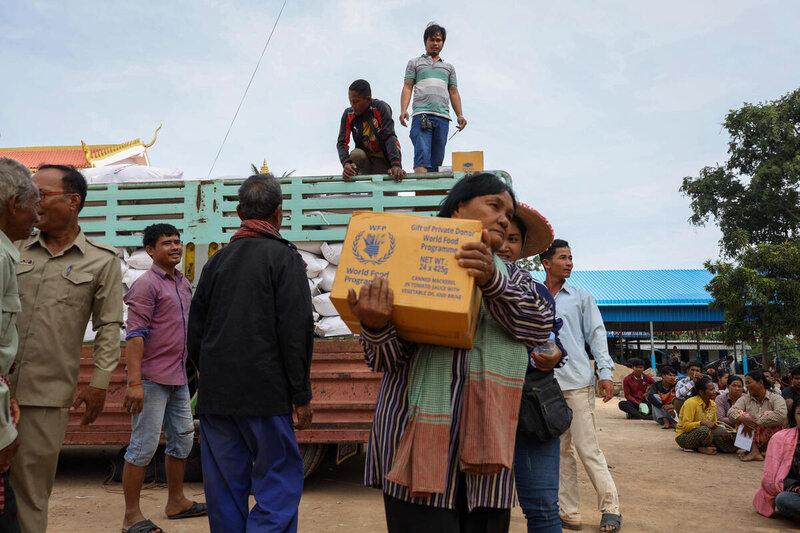
Carton boxes are known as ‘secondary packaging’ as they are not in direct contact with food contents.
“Our help is lifesaving and life-changing and that’s inspiring,” says Emanuela Cattaneo, environmental adviser in the U.N. World Food Programme’s regional bureau in Nairobi. “But it also leaves behind an unwanted environmental footprint. We’re aware of that – that’s why we’ve made an official commitment to curb that footprint.”
“We’re making progress: Our office here in Kenya has recycled 1.1 million polypropylene woven bags. In Ethiopia, we’ve recycled 9,000 pallets,” she says. But challenges remain. “At the local level, the communities that receive assistance often lack the tools to recycle or reuse packaging efficiently. We’re working to change that.” She adds: “It’s also essential to act at the source – designing packaging materials that are easier to recycle, for example.”

In October 2021 alone, WFP reached 2.4 million people.
At the U.N. World Food Programme’s HQ in Rome, packaging expert Carole Manceau is tackling similar challenges, working to make sure the U.N. World Food Programme’s packaging is safe, sustainable and fully fit for purpose – of which there is a great deal.
“There’s lots our packaging has to accomplish,” says Manceau. “It has to protect and preserve food, of course. But it also has to provide information on safe use and disposal. It must be able to withstand a variety of climates and sit for extended periods of time in warehouses. It also has to allow for effective transport and tracking… and more!”
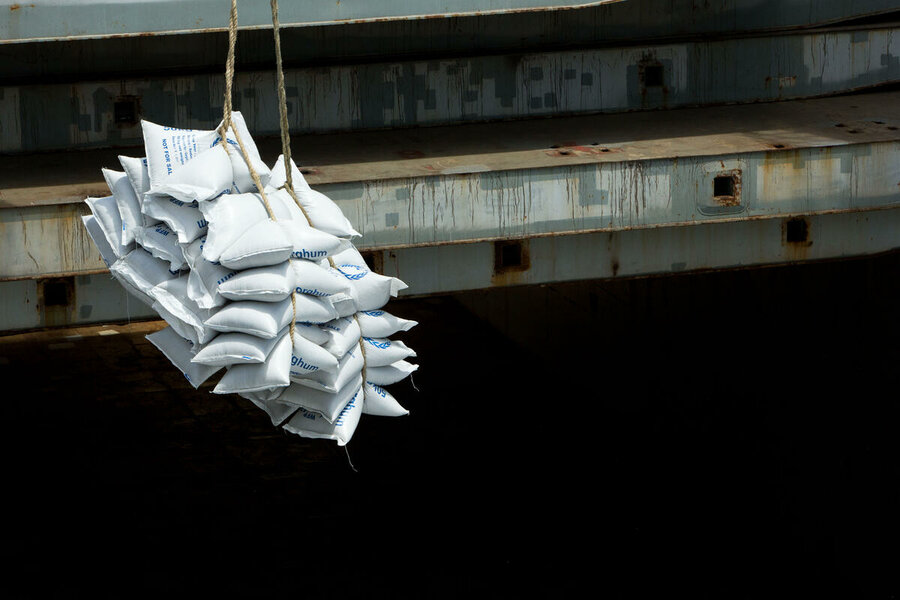
WFP food assistance offers a lifeline in emergencies caused by conflict and climate change.
When it comes to food assistance packaging, there is no one-size-fits-all solution. “The requirements for grains and beans, for example, are significantly different from those used for specially-made nutritious foods,” says Manceau.
Crucially, U.N. World Food Programme packaging has to be environmentally sustainable going forward. In order to achieve this effective, versatile and eco-friendly packaging, WFP has partnered with Mondi – a global leader in this space.
“Our approach is to make packaging sustainable by design,” says Marita Schmid, social sustainability manager at Mondi. “Take recycling, for instance,” says Schmid. “At Mondi, we’ve developed paper solutions that are fully recyclable, while strong enough to protect the product and prevent food loss.”
Photo: WFP/Kabir Dhanji/2017On any given day WFP has 30 ships, 100 aircraft and over 5,000 trucks on the go – working to bring food and other assistance where needed.
In Mombasa, Silva is busy overseeing the sorghum distribution to neighbouring South Sudan and Uganda. Like Schmid, she sees potential in this partnership with Mondi. “Our job is to reach the people we serve and help change their lives for the better. So it’s only natural to focus on the environment and our footprint—because by saving our planet, we save lives.”
This story originally appeared on WFP’s Stories on November 8, 2021 and was written by Matthew Stevens.
